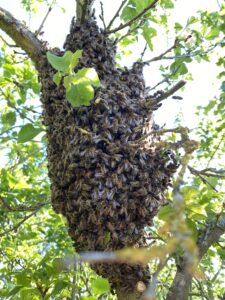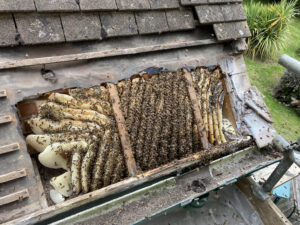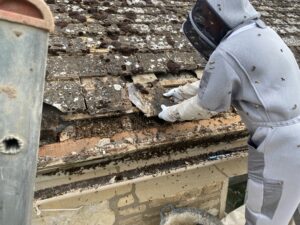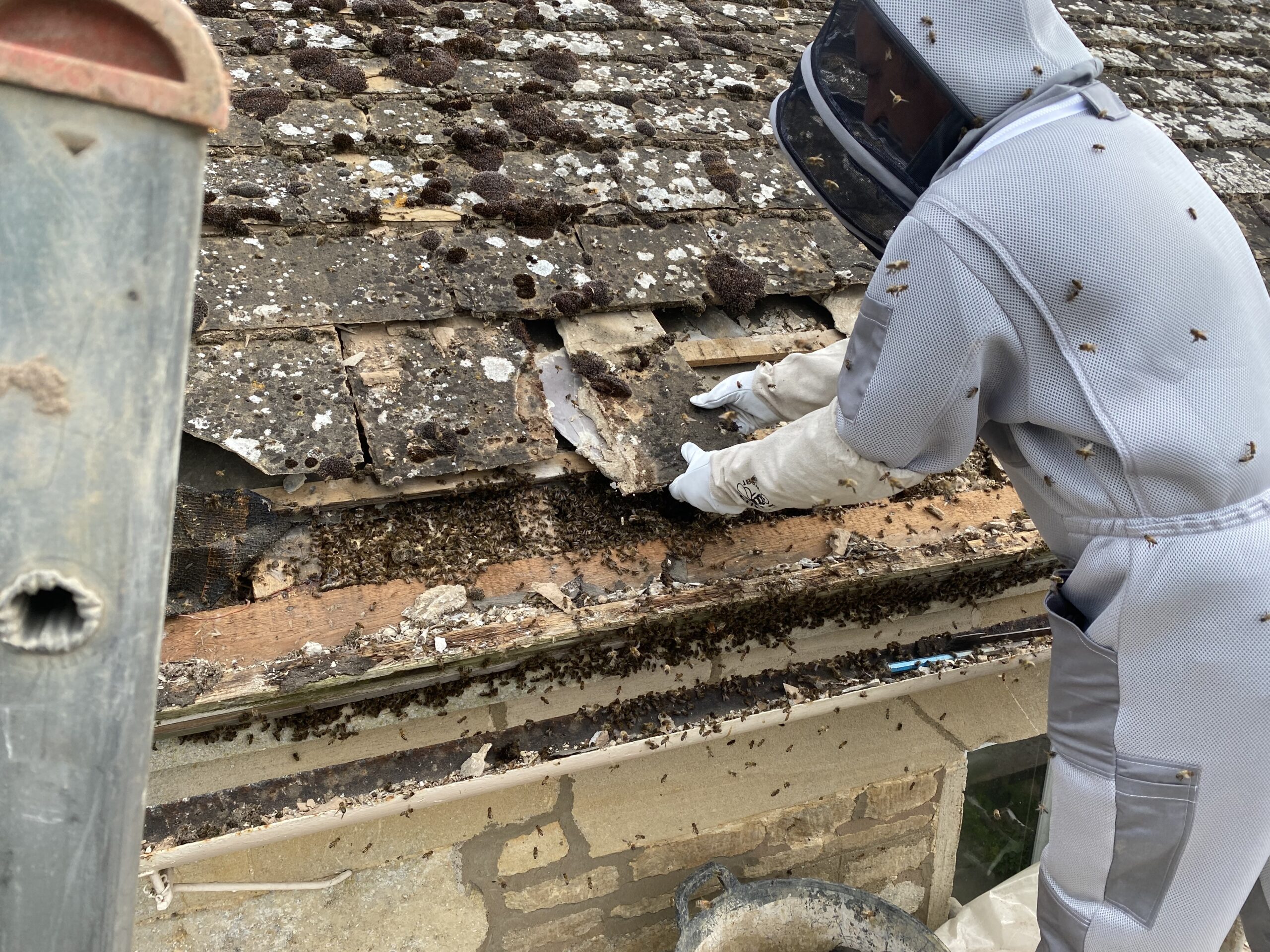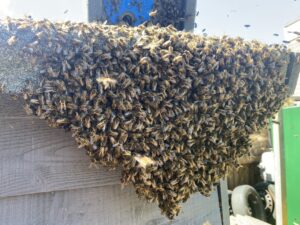 What are Honeybee Swarms?
What are Honeybee Swarms?
Each year between around April and July, almost every colony of honeybees will naturally swarm. This is regardless of whether the colony is kept in a hive by a beekeeper or is a feral colony living naturally in a tree or other location.
Swarming is the honeybees natural method of reproduction. The old queen will leave the original nesting location, taking around half the colony with her and they set off to find a new home; leaving the original colony to carry on in its original location and raising a new queen.
Before they swarm, bees will feed from the honey stored in the original nest as they won’t know when they will be getting their next meal.
Are Honeybee Swarms Dangerous?
Whilst it can be extremely intimidating for anyone not familiar with a honeybee swarm to see a huge buzzing cloud heading towards them, or to see a few thousand honeybees clustering on a branch or a fencepost, honeybees are usually at their most placid when swarming. This is for a number of reasons, but primarily because they will have just had a good meal, but also as they no longer have a hive to protect. However, as with all things nature-related, there can be exceptions, but this is extremely rare with honeybee swarms.
What is The Swarm Doing When it Clusters?
The swarming bees will cluster on a fencepost or branch of a tree (or other location) while scout bees will head off to find somewhere new to make their home. They usually look for somewhere with a reasonably small entrance and a nice large cavity inside. For this reason, chimneys, flat roofs, wall cavities and other locations on homes and other buildings are often chosen. Once the scout bees have decided a location is suitable for the colony to make their permanent home, they then bring the colony to the location with them. The bees will all settle around the entrance, and very quickly can be seen filing inside to start drawing comb.
Honeybees are Entering My Building – What Do I Do?
If you see a honeybee swarm behaving in this way on your property, we recommend whatever you do, do not ignore it and just hope the bees will move on. Occasionally the bees might choose to move on within a few hours or so, but in the vast majority of cases, they won’t. Once inside your property the bees will start drawing out comb and filling this with forage (pollen and nectar) very quickly and once they do this they will be there permanently, potentially requiring a live removal to be undertaken which involves opening up the fabric of the building for live removal and rehoming of all bees and comb. As you may imagine, this can be major work, and can get very expensive.
Help!!!!
There is however a solution. At iX5 Pest Control if we can get out to a new colony location with 24 hours or so of them moving in there are often techniques we can use to encourage them back out, without the need to open up the fabric of the building, and without harming the bees. After around 36 hours this is unlikely to be successful, meaning a live removal might be the only viable option.
Time however is absolutely critical, so as we are fast heading into honeybee swarming season, you may wish to keep our contact details to hand.
iX5 Pest control can be contacted for specialist advice on honeybee colonies or advice on any other pest matter, please contact us here or call us on 01604 328545
